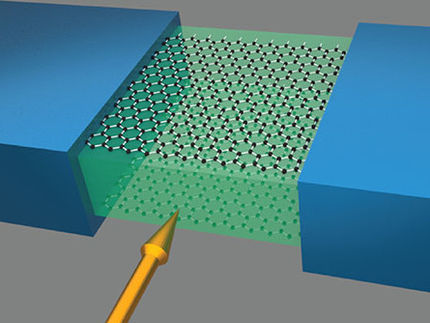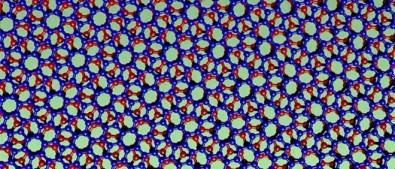New evidence for an exotic, predicted superconducting state
superconductors and magnetic fields do not usually get along. But a research team led by a Brown University physicist has produced new evidence for an exotic superconducting state, first predicted a half-century ago, that can indeed arise when a superconductor is exposed to a strong magnetic field. The research is published in Nature Physics.
"It took 50 years to show that this phenomenon indeed happens," said Vesna Mitrovic, associate professor of physics at Brown University, who led the work. "We have identified the microscopic nature of this exotic quantum state of matter."
Superconductivity depends on the formation of electron twosomes known as Cooper pairs. In a normal conductor, electrons rattle around in the structure of the material, which creates resistance. But Cooper pairs move in concert in a way that keeps them from rattling around, enabling them to travel without resistance.
Magnetic fields are the enemy of Cooper pairs. In order to form a pair, electrons must be opposites in a property that physicists refer to as spin. Normally, a superconducting material has a roughly equal number of electrons with each spin, so nearly all electrons have a dance partner. But strong magnetic fields can flip "spin-down" electrons to "spin-up", making the spin population in the material unequal.
"The question is what happens when we have more electrons with one spin than the other," Mitrovic said. "What happens with the ones that don't have pairs? Can we actually form superconducting states that way, and what would that state look like?"
In 1964, physicists predicted that superconductivity could indeed persist in certain kinds of materials amid a magnetic field. The prediction was that the unpaired electrons would gather together in discrete bands or stripes across the superconducting material. Those bands would conduct normally, while the rest of the material would be superconducting. This modulated superconductive state came to be known as the FFLO phase, named for theorists Peter Fulde, Richard Ferrell, Anatoly Larkin, and Yuri Ovchinniko, who predicted its existence.
To investigate the phenomenon, Mitrovic and her team used an organic superconductor with the catchy name κ-(BEDT-TTF)2Cu(NCS)2. The material consists of ultra-thin sheets stacked on top of each other and is exactly the kind of material predicted to exhibit the FFLO state.
After applying an intense magnetic field to the material, Mitrovic and her collaborators from the French National High Magnetic Field Laboratory in Grenoble probed its properties using nuclear magnetic resonance (NMR).
What they found were regions across the material where unpaired, spin-up electrons had congregated. These "polarized" electrons behave, "like little particles constrained in a box," Mitrovic said, and they form what are known as Andreev bound states.
"What is remarkable about these bound states is that they enable transport of supercurrents through non-superconducting regions," Mitrovic said. "Thus, the current can travel without resistance throughout the entire material in this special superconducting state."
Experimentalists have been trying for years to provide solid evidence that the FFLO state exists, but to little avail. Mitrovic and her colleagues took some counterintuitive measures to arrive at their findings. Specifically, they probed their material at a much higher temperature than might be expected for quantum experiments.
"Normally to observe quantum states you want to be as cold as possible, to limit thermal motion," Mitrovic said. "But by raising the temperature we increased the energy window of our NMR probe to detect the states we were looking for. That was a breakthrough."
This new understanding of what happens when electron spin populations become unequal could have implications beyond superconductivity, according to Mitrovic.
Most read news
Organizations
Other news from the department science

Get the chemical industry in your inbox
By submitting this form you agree that LUMITOS AG will send you the newsletter(s) selected above by email. Your data will not be passed on to third parties. Your data will be stored and processed in accordance with our data protection regulations. LUMITOS may contact you by email for the purpose of advertising or market and opinion surveys. You can revoke your consent at any time without giving reasons to LUMITOS AG, Ernst-Augustin-Str. 2, 12489 Berlin, Germany or by e-mail at revoke@lumitos.com with effect for the future. In addition, each email contains a link to unsubscribe from the corresponding newsletter.





























































